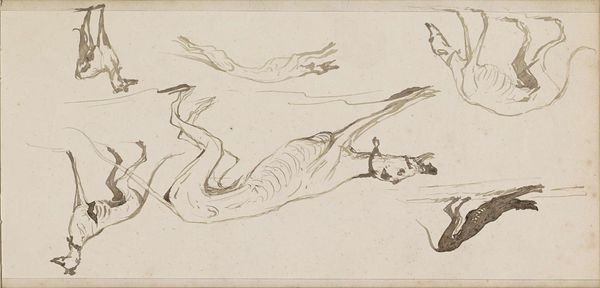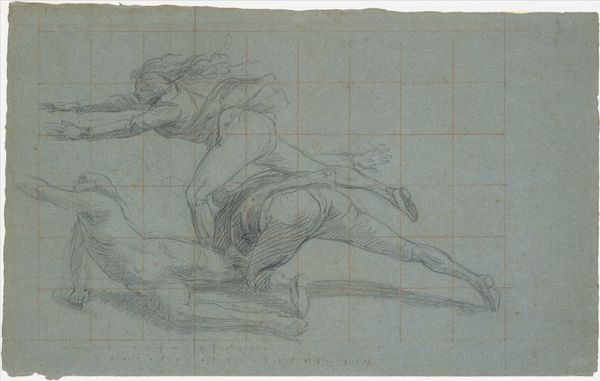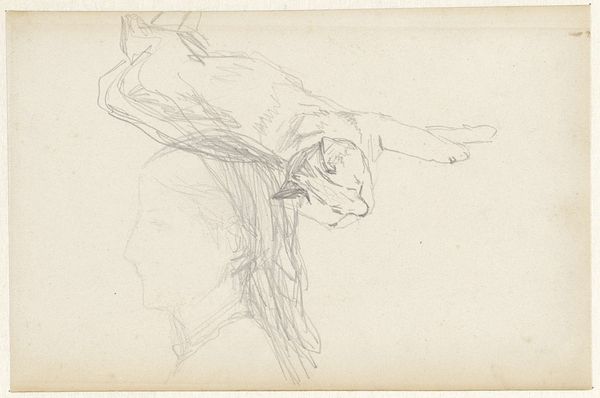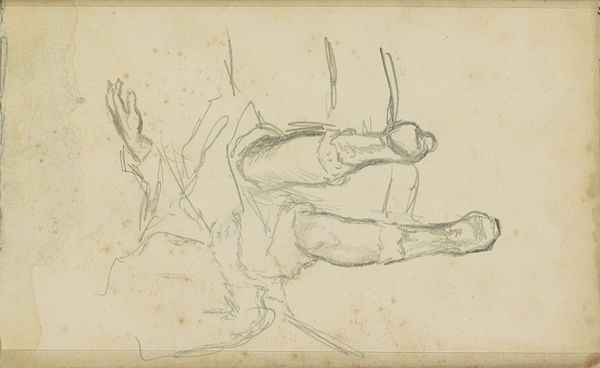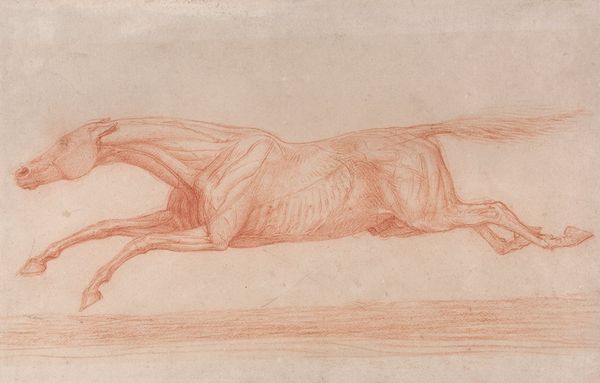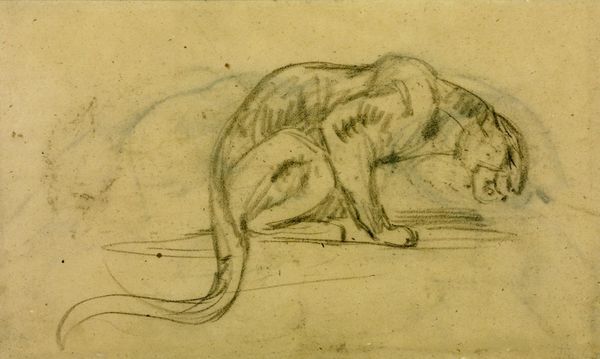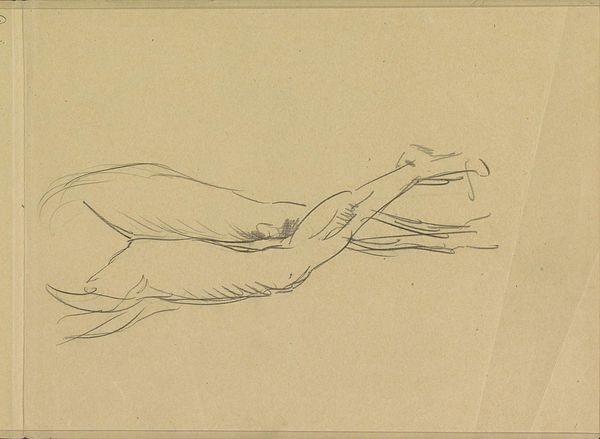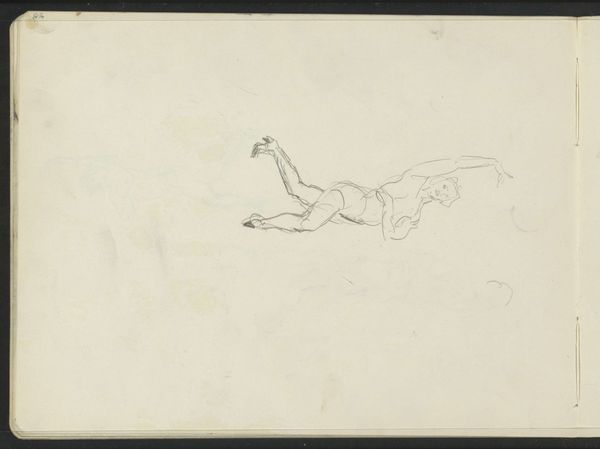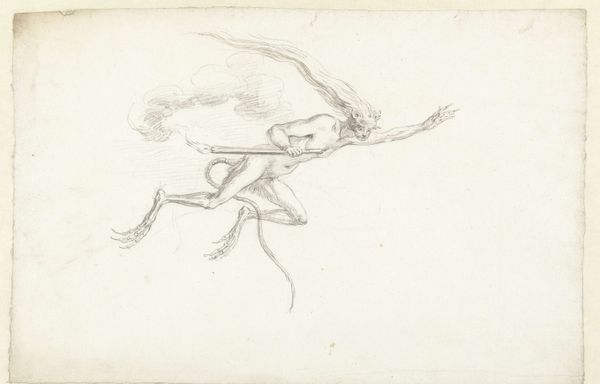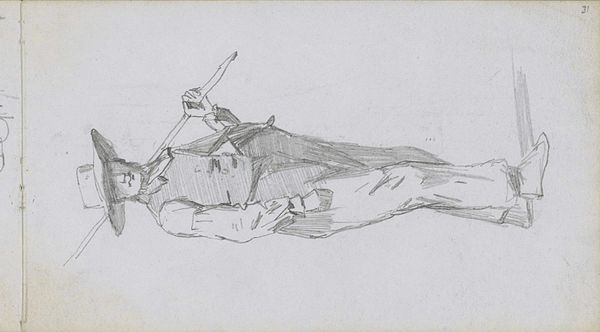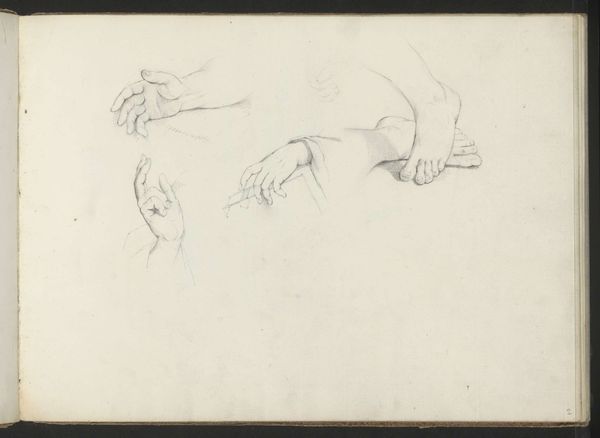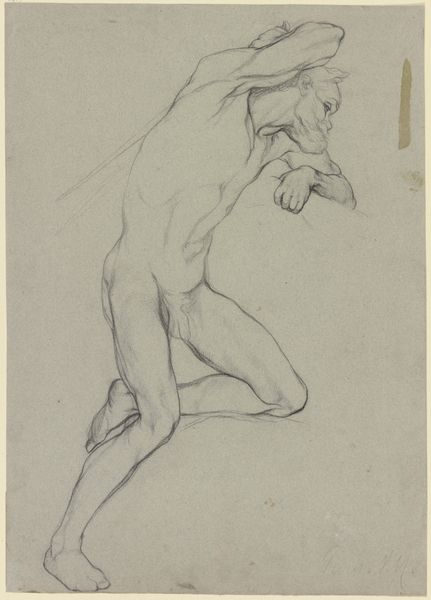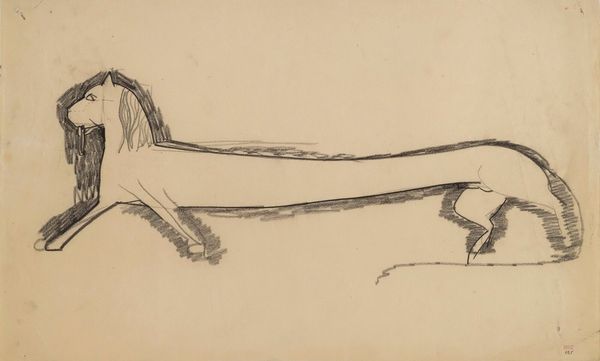
drawing, pencil
#
drawing
#
pencil sketch
#
landscape
#
charcoal drawing
#
figuration
#
pencil drawing
#
pencil
#
line
#
realism
Copyright: Public Domain: Artvee
Curator: We're now looking at George Stubbs’ pencil drawing, "Tiger, Recumbent, Viewed Ventrally," created sometime between 1795 and 1806. My first thought is vulnerability, even a little humour. That pose is so… exposed. Editor: It’s a really striking contrast to the typical imagery associated with tigers, isn't it? Instead of power and aggression, we see this relaxed, almost comical, posture. It seems Stubbs is asking us to reconsider our ingrained perceptions of wild animals, perhaps hinting at the way colonial narratives often portray them. Curator: Precisely. Tigers in Western art were frequently used to symbolize the exotic "other," often demonized. But look at the incredibly detailed musculature Stubbs captures. It’s an anatomical study, of course, but there's a hint of scientific detachment. Did Stubbs truly consider it a symbol of untamed wildness, or did he approach it with scholarly curiosity? Editor: The position of the tiger certainly echoes religious iconography. Its raised hind leg reminds me of depictions of creatures in heraldry or even the Lion of Judah. Are we meant to see parallels between animal power and the divine, a subtle elevation of the natural world? Curator: Interesting perspective! Considering Stubbs' era, such visual connections could serve as a commentary on the human relationship with nature, blurring the lines between reverence and dominion. Maybe it shows a very dawning scientific appreciation that was seeking, with limited success, to escape earlier colonial viewpoints. Editor: Yes. I think the simplicity of the medium enhances this. A drawing in pencil is so raw, so direct. It strips away artifice, forcing us to confront the essence of the animal, unburdened by layers of artistic interpretation. The emotional weight falls less on the artist and more on the subject. Curator: It definitely presents a fascinating challenge to how we interpret the tiger’s cultural significance then and now, suggesting its depiction is less about objective representation and more about subjective, historically situated human perspectives. Editor: Agreed. I will see representations of tigers differently from now on. It brings to light how art challenges the very foundation of cultural symbols.
Comments
No comments
Be the first to comment and join the conversation on the ultimate creative platform.
